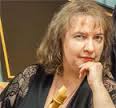Sonata for flute in e minor (ed. g minor), BWV 1034
About the piece:
Sonata in 4 movements:
Adagio ma non tanto, Allegro, Andante, Allegro.
The Sonata in E minor for Flute and Basso Continuo is dedicated to flutist Michael Gabriel Fredersdorff, an employee of Frederick the Great who was also an accomplished flute player. However, the manuscript with this dedication was not prepared by Bach himself. Furthermore, there exists an early copy of the sonata without any indication of a dedication. It is possible, then, that either the dedication was not made by Bach, or he merely revived an older work for Fredersdorff’s use, appending a dedication as a formality.
The sonata is constructed in the Baroque sonata di chiesa (“church sonata”) format, that is, a slow-fast-slow-fast order of movements.
This piece is believed to have been written during Bach’s Cothen period (1717-23), when he was employed as capellmeister for Prince Leopold of Cothen. However, there is some evidence that this may have been written slightly later, after Bach’s move to Leipzig.
Bach’s instrumental works served him well in later years when he took charge of a series of concerts given in a Leipzig coffee house, but what was played in those concerts has gone largely unrecorded, as coffee-house events inevitably would.
The four movements alternate fast and slow tempos, departing from the tonic minor key to a melodious relative major in the third.
Bach sometimes seems to forget that the flutist has to breathe: the speedy second movement includes a passage of over 100 consecutive sixteenth-notes without a break!
Richard D. P. Jones writes in his book “The Creative Development of Johann
Sebastian Bach, vol. II, 1717-1750” that “the sonata in e minor, copied out by Johann Peter Kellner in 1726/7, is not just a solo with accompaniment but often a genuine duo between flute and continuo bass. The opening theme of the first movement is an accompanied flute solo, but the answering theme (bar 5) is led by the continuo, which is then imitated by the flute at an upper octave. Such continuo-led writing recurs several times later on (bb. 11 and 24). The following Allegro is a concertante fugue with bif perfidia-style episodes. Flute and continuo here form duo partners in the ritornello-like fugal expositions, but the episodes are brilliant accompanied flute solos. In the Andante we encounter a clear division of responsibilities. Within an overall ABA reprise structure, the florid, cantabile flute part to a large extent unfolds freely over the varible ground bass of the continuo. The Allegro-finale is cast in binary form with repeates. The closest parallel is found in solo violin sonatas Nos. 2 and 3, for all three finales have lively, rhythmic themes with internal repetition and (in 2 cases) echo dynamics. A concertante effect is created by the manner in which the tonic full-close at the end of the first period (b. 12) is followed by an entirely new, contrasting theme. The two halves of the binary structure are bound together by an extended, 20-bar reprise (bb 23-42=69-88).
An interesting Masters thesis written by Savio Cunto de Araujo in 1990 about:
“J. S. Bach and the flute sonatas: An overview of the Authenticity and Chronology, and analysis of the E minor Sonata, BWV 1034” can be found here.
An interesting analysis of the sonata can be found here, in the Masters thesis by Lidayne Reyes (2011).
Another dissertation deals with this sonata:
Unlocking the affections in J. S. Bach’s Flute Sonata in E minor, BWV 1034.
Its’ abstract can be reached here.
The Music:
Traverso Facsimilie: here.
A later edition, still in facsimilie: here.
Recorder edition: here.
Recordings:
Frans Brüggen – traverso
Gustav Leonhardt – harpsichord
Anner Bylsma – baroque cello
Barthold Kuijken (transverse flute), Ewald Demeyere (harpsichord):
Wilbert Hazelzet (baroque flute)
Jacques Ogg (harpsichord)
Jaap ter Linden (baroque cello):
Only the Andante:
MARKUS ZAHNHAUSEN (flauto dolce)
GEORG STAUDACHER (cembalo)
Young Shin Park (recorder)
Jae Yeon Kim (harpsichord)
Absolutly NOT my cup of tea, as far as performances go, but worth listening to:
Michala Petri – recorder, Keith Jarrett – electric harpsichord
